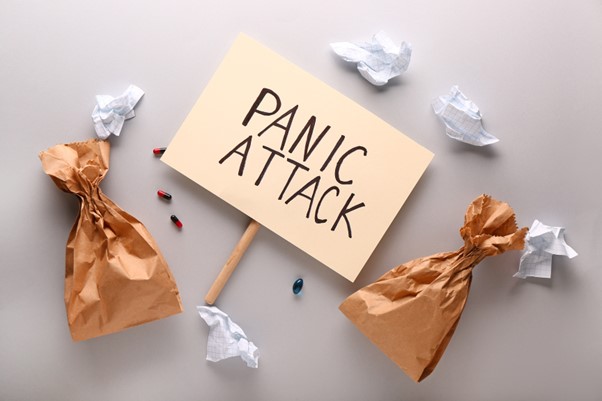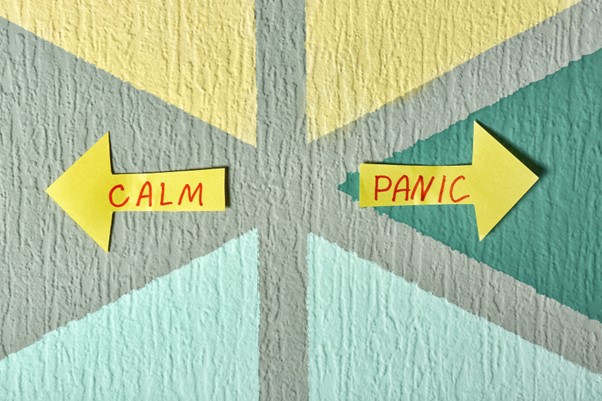Understanding Panic Attacks: A Psychological Perspective

Understanding Panic Attacks: A Psychological Perspective
Panic attacks can be a frightening and overwhelming experience, characterized by sudden episodes of intense fear or discomfort. Understanding the psychological underpinnings of panic attacks can help demystify the experience and offer pathways for managing and mitigating their impact.
What is a Panic Attack?
A panic attack is a sudden onset of intense fear that triggers severe physical reactions when there is no real danger or apparent cause. Symptoms can include a racing heart, sweating, trembling, shortness of breath, and a feeling of impending doom [4].
Symptoms
- Physical Symptoms: These include palpitations, chest pain, dizziness, nausea, and chills.
- Emotional Symptoms: Feelings of unreality (derealization) or being detached from oneself (depersonalization).
- Cognitive Symptoms: Fear of losing control, fear of dying, or feeling an intense urge to escape.
Causes of Panic Attacks
The exact cause of panic attacks is not fully understood, but several factors may contribute:
Genetics
A family history of panic attacks or panic disorder can increase the risk [2].
Brain Function
Abnormalities in neurotransmitter function can play a role. For example, dysregulation in the serotonin and norepinephrine systems has been implicated in panic disorders.
Stress
Significant life stress, such as the death of a loved one, can trigger panic attacks. Chronic stress can also lead to an increased likelihood of experiencing panic attacks [2].
Temperament
Individuals with a high sensitivity to stress or prone to negative emotions are more susceptible. Traits like neuroticism or high anxiety sensitivity can predispose individuals to panic attacks [5].
What’s Happening During a Panic Attack?
During a panic attack, the body’s fight-or-flight response is activated, even though there is no real threat. This response causes the release of adrenaline, leading to the physical symptoms of a panic attack. Understanding this can help individuals recognize that while the experience is uncomfortable, it is not dangerous [3].
Biological Perspective
- Adrenaline Surge: The sudden release of adrenaline causes an increase in heart rate, muscle tension, and other physiological responses.
- Hyperventilation: Rapid breathing reduces carbon dioxide levels in the blood, leading to dizziness and tingling sensations.
- Cortisol: Chronic stress can lead to elevated levels of cortisol, contributing to increased anxiety and panic symptoms.
Psychological Perspective
- Cognitive Misinterpretations: Individuals often misinterpret bodily sensations as catastrophic, which can exacerbate panic symptoms.
- Learned Behavior: Past experiences of panic can condition individuals to fear future attacks, creating a cycle of anxiety and panic.
The Impact of Panic Attacks
Psychological Impact
Panic attacks can lead to increased anxiety and avoidance behaviors, significantly impacting daily life. This can result in agoraphobia, where individuals avoid places or situations where they previously experienced panic attacks [1].
Physical Health
Chronic panic attacks can lead to various health issues, including cardiovascular problems due to prolonged stress responses. Individuals may also experience gastrointestinal issues, chronic headaches, and sleep disturbances.
Social and Occupational Functioning
Panic attacks can impair social and occupational functioning, leading to decreased quality of life. Fear of having a panic attack in public or at work can lead to avoidance of these situations, resulting in social isolation and occupational difficulties [6].
Coping with Panic Attacks
Recognize the Symptoms
Understanding the symptoms of a panic attack can reduce fear and help you regain control.
Breathing Techniques
Slow, deep breathing can help calm the nervous system. Practicing controlled breathing can reduce the intensity and duration of a panic attack.
Mindfulness and Relaxation
Practices like meditation and progressive muscle relaxation can reduce overall anxiety levels. Regular mindfulness practice can improve emotional regulation and decrease the frequency of panic attacks.
Professional Help
Cognitive-behavioral therapy (CBT) is highly effective in treating panic attacks and panic disorder. Exposure therapy, a component of CBT, can help individuals confront and desensitize themselves to panic-inducing situations [2].
Medication
Medications, such as selective serotonin reuptake inhibitors (SSRIs) and benzodiazepines, can be used to manage symptoms. These medications can help reduce the frequency and severity of panic attacks when used under the guidance of a healthcare provider.
Conclusion
Panic attacks are a common and treatable condition. Understanding the psychological aspects of panic attacks can help reduce the fear associated with them and provide effective strategies for management. If you or someone you know struggles with panic attacks, seeking professional help can make a significant difference.
🌐 Sources
- ncbi.nlm.nih.gov – Panic Disorder – StatPearls
- ncbi.nlm.nih.gov – Biological and cognitive theories explaining panic disorder
- journals.sagepub.com – Panic Attacks and Their Relation to Psychological …
- britannica.com – Panic attack | Causes, Symptoms & Treatment
- sciencedirect.com – Panic attacks and physical health problems in a …
- gpsych.bmj.com – Assessing vulnerability to panic: a systematic review of …








Responses